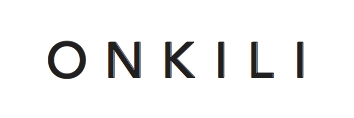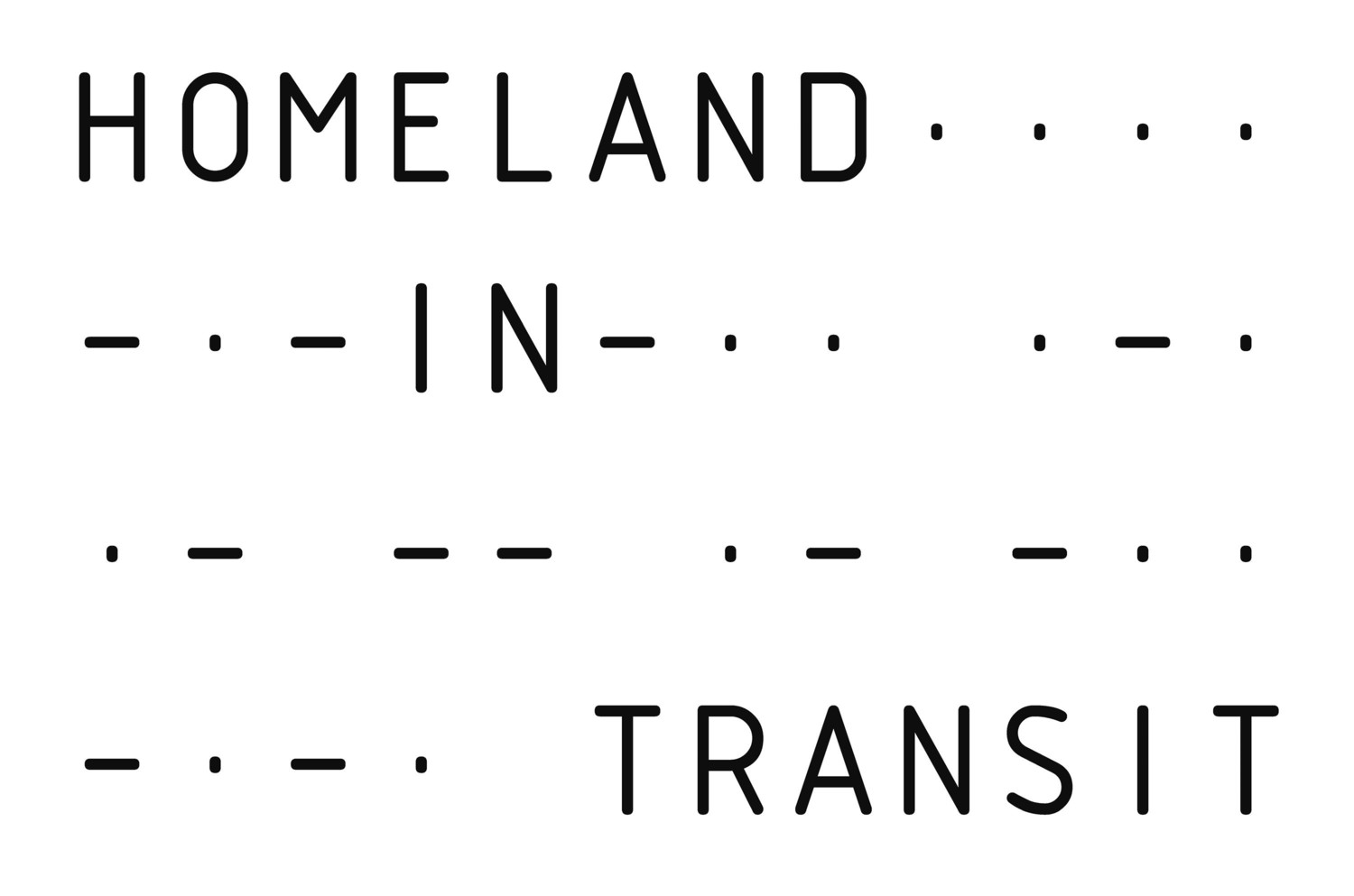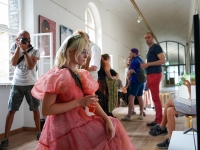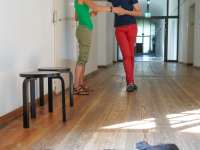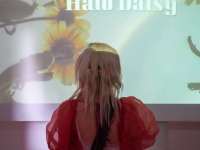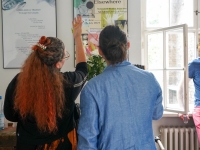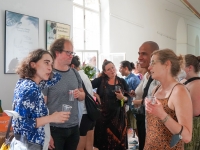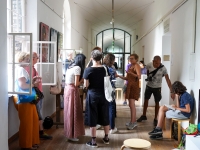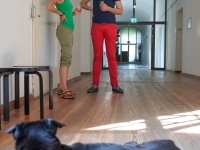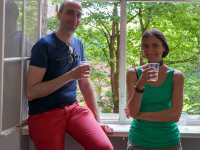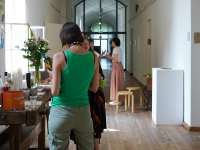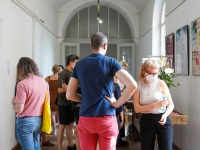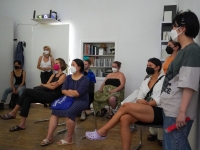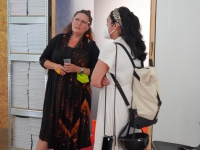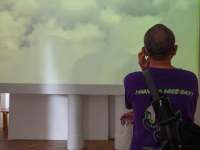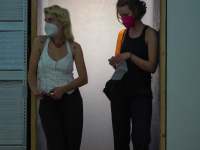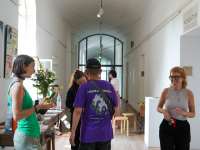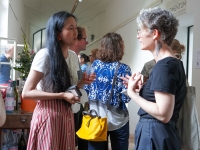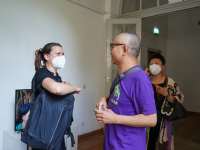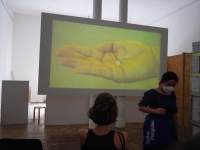MOMENTUM and
co-present:
HOMELAND in TRANSIT
Returns to MOMENTUM with a new chapter:
Through the Clouds
Featuring:
LUKE CHING // LO LAI LAI NATALIE // YIM SUI FONG
Curated by Angelika Li
OPENING:
Sunday 11 July 2021 @ 1 – 7 pm
CORONA SAFETY: FFP2 mask required, no booking necessary.
EXHIBITION:
11 – 25 July 2021
Wednesday – Sunday, 1 – 7 pm
@ MOMENTUM
Kunstquartier Bethanien
Mariannenplatz 2, 10997 Berlin
 |
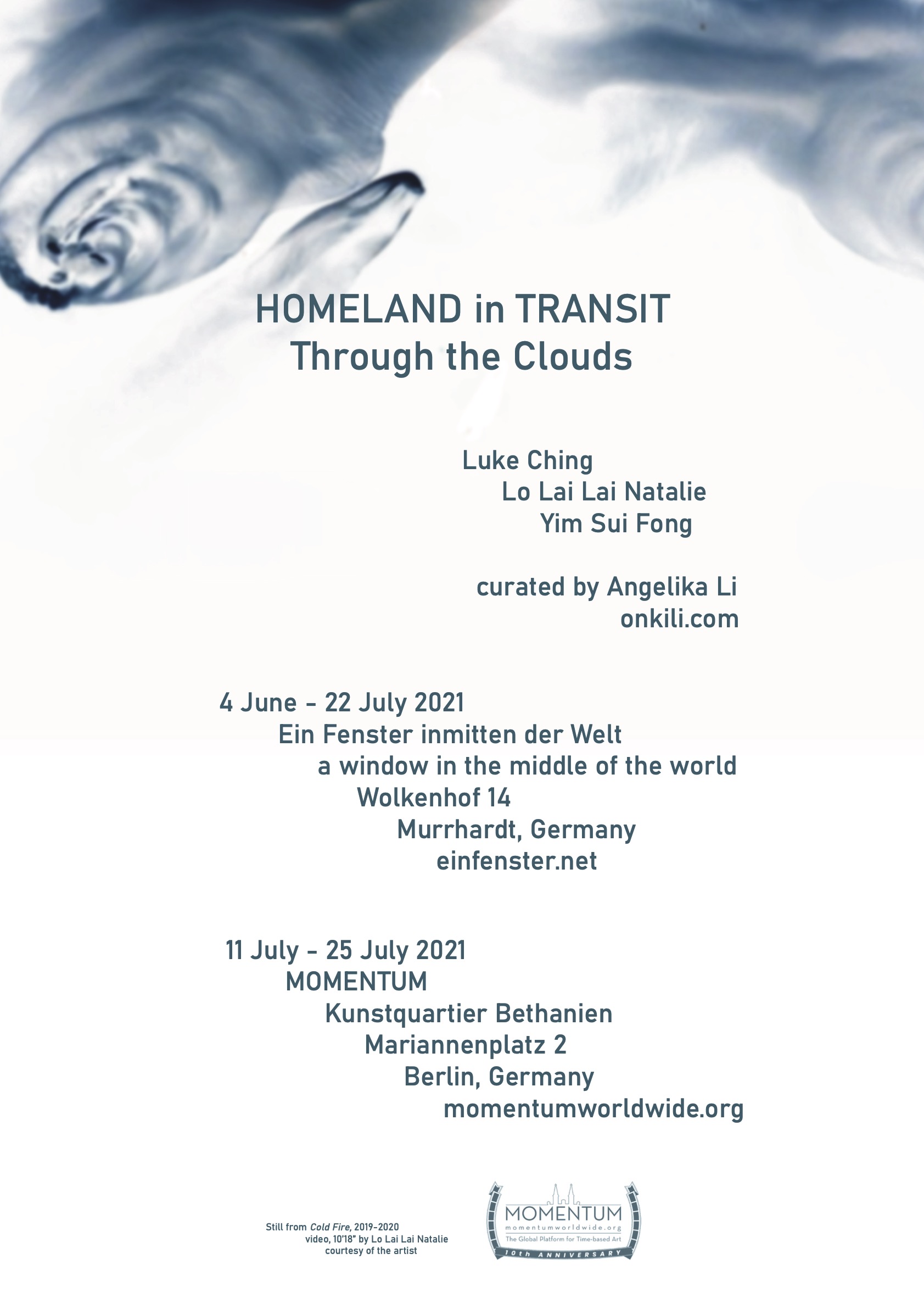
HOMELAND in TRANSIT: Through the Clouds
Curatorial Statement
“Where are you from?” This simple question opens up thoughts and conversations about the notion of homeland and triggered the idea of the curatorial project HOMELAND in TRANSIT. The word ‘homeland’ evokes a physical and permanent form on the surface, yet when we dive a little deeper into our memories and emotions, the word urges us to reflect on its complex and shifting nature. The project channels narratives of ‘homeland’ from Hong Kong perspectives: borders, boundaries, roots, diaspora, cultural identity, colonial ideologies and beyond. Despite many differences in our backgrounds, the sense of homeland is constantly being questioned and reinterpreted. How do artists perceive these transformations and how do they represent it in their art?
HOMELAND in TRANSIT was conceptualised by Angelika Li in 2018 soon after her move from Hong Kong to Switzerland in 2017. The inaugural exhibition started in Basel 2019 with further chapters at MOMENTUM in Berlin (2020), ‘By the River Rhine’ in Kleinbasel (2020), ‘Through the Clouds’ at Ein Fenster inmitten der Welt in Wolkenhof, Murrhardt (2021), MOMENTUM Berlin (2021), and ‘Heimat im Wandel’ in Zollikon (postponed to 2022).
Visit Chapter One of HOMELAND in TRANSIT Here > >
MOMENTUM is happy to welcome back HOMELAND in TRANSIT with this new chapter – Through the Clouds – originally developed for the art space Ein Fenster inmitten der Welt in Wolkenhof, Murrhardt, Germany, and now travelling to Berlin with video art, installations, and Video Talks at MOMENTUM.
In the short time since the inaugural exhibition of “Homeland in Transit” in 2019, our world has changed dramatically and each word in this title has developed a wider scope of meaning and expanded relevance. In the extraordinary situations of 2020, we set sail along the forces of water – an intrinsic and characteristic element of Hong Kong – through the notions of migration, self-searching and our human resilience to further our expedition.
In 2021, we arrive at Ein Fenster inmitten der Welt, a window in the middle of the world situated in a natural reserve forest area near Stuttgart, with two interfaces: one to the real world, one to the virtual. The physical location of the exhibition is at a house in Wolkenhof built by Heinrich von Zügel (1850-1941), a founding member of the Munich Secession and pioneer of German Impressionism in 19th century. During that time, Wolkenhof was a meeting place for artists and the name literally means ‘Clouds Court’ in German.
The environment of Wolkenhof and its name serve as points of departure for this transit through the dynamics of the hydrological cycle: clouds, wind and rain. The boundless nature of clouds has inspired many in the arts across different cultures. Cloud appears in many poets’ work including ‘I Wandered Lonely as a Cloud’ (1798) by English poet William Wordsworth (1770-1850) who personifies himself as a melancholic cloud that aimlessly drifts ‘high o’er vales and hills’. His poem illustrates that we do not realise the significance of the simplest things until they are gone forever. By using daffodils as a metaphor for the voice of Nature, the poet reminds humankind of its restorative power and value. Are the clouds floating in hopes that they will discover fulfillment in life? In a very different context and in his tempestuous style, Chinese poet Xu Zhimo (1897-1831) opens his poem ‘By Chance’ (1926) with ‘I am a cloud in the sky…’, expressing the inevitable nature and qualities of change, unpredictability and impermanence between the cloud and water, I and you, ‘the sea in the darkness’ and ‘the glow that sparked between us as we crossed our paths’. The clouds lightly float in the sky, yet their movements, direction or destination cannot be decided according to its own will, without other forces, such as the wind.
The sense of floatingness and helplessness echoes Hong Kong novelist Xi Xi’s (1937-) ‘The Floating City’ (1986), with René Magritte’s ‘The Castle of the Pyrenees’ (1959) on a big rock suspending in the air above a rough sea as the visual imagery accompanying the opening chapter. The imagery accentuates the feeling of loneliness, isolation, rootlessness and escape: ‘The floating city appeared suddenly before everyone’s eye in the middle of sky like a hydrogen-filled balloon on a clear, bright day many years ago. Rolling clouds swirled by above; waves crashed on the swelling sea below…There had been a violent collision of clouds lighting up the sky with flashes and roars of thunder…Suddenly the floating city had dropped from the clouds and hung in midair.’ The floating city and its people have no control over their destiny, they can only fluctuate as external factors change.
Soon after she received the Cikada Prize in 2019, Xi Xi spoke in an interview with Hong Kong Economic Journal about her recent observation on Hong Kong: ‘the reality now is way more surreal than any fiction.’ From Hong Kong perspectives, how do artists Luke Ching, Yim Sui Fong and Lo Lai Lai Nathalie perceive the transformations, if not turbulences? Four video works and two planned installations have been selected for this exhibition. Wordsworth’s allegory might invoke contemplation on the disappearance of things dear to us. Are we going through a test to our resilience in unpredictable environments? Are we staying within the new realities or breaking through? Are we like clouds, going where the wind blows, by chance?
– Angelika Li
Luke CHING 程展緯
![]()
Pixel 像素
2014, Video, 43 secs, Edition 2/5
The work Pixel (2014) is a video about the candlelight vigil held at the Victoria Park in Hong Kong. To the artist, a droplet of wax represents a candle, which becomes a cluster of pixels. Every year on 4th June, the media focus a lot on the resolution of the Victoria Park image, and behind each candlelight is a holder of flesh and blood. The candle distinguishes with a trace of smoke.
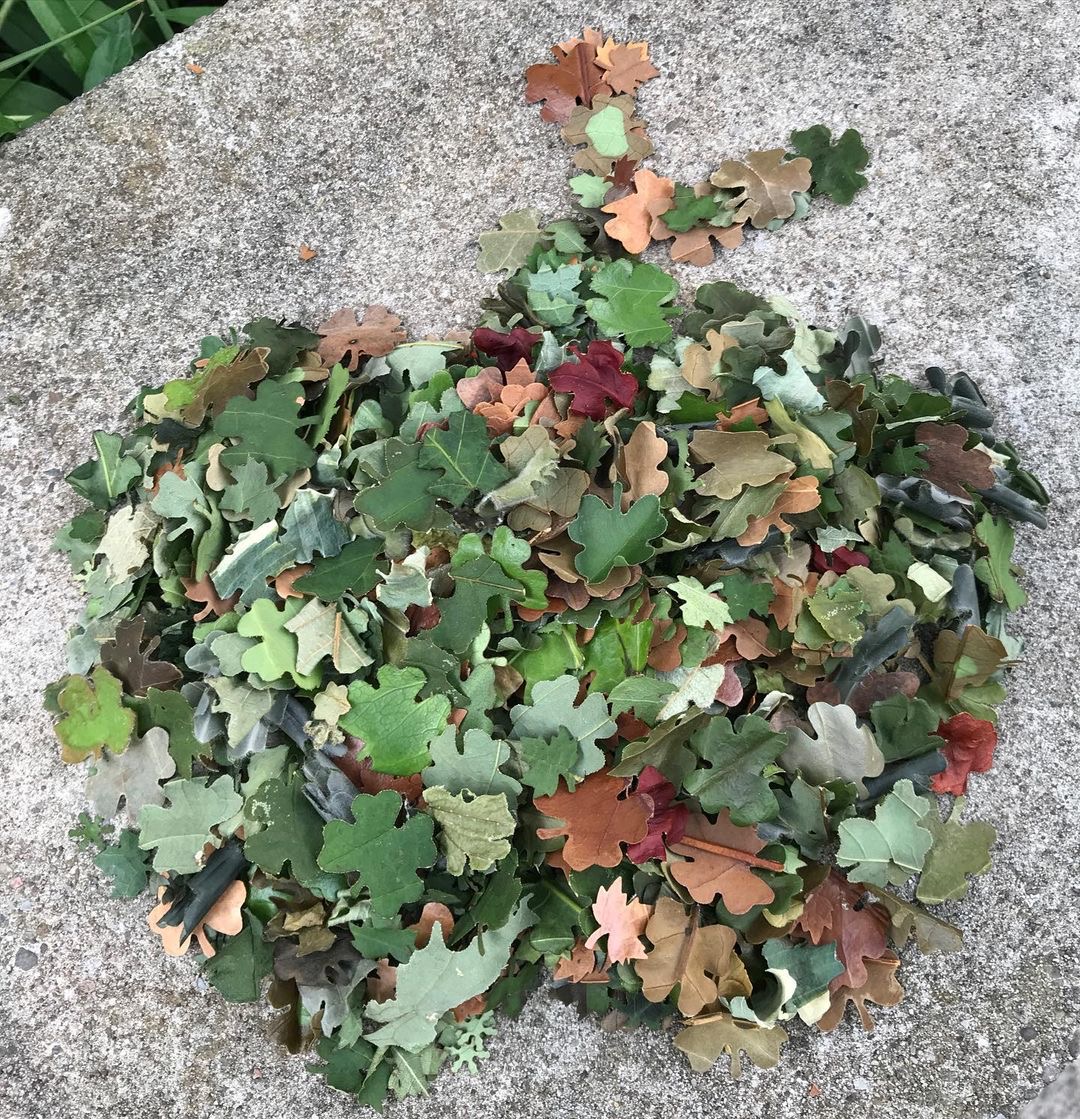
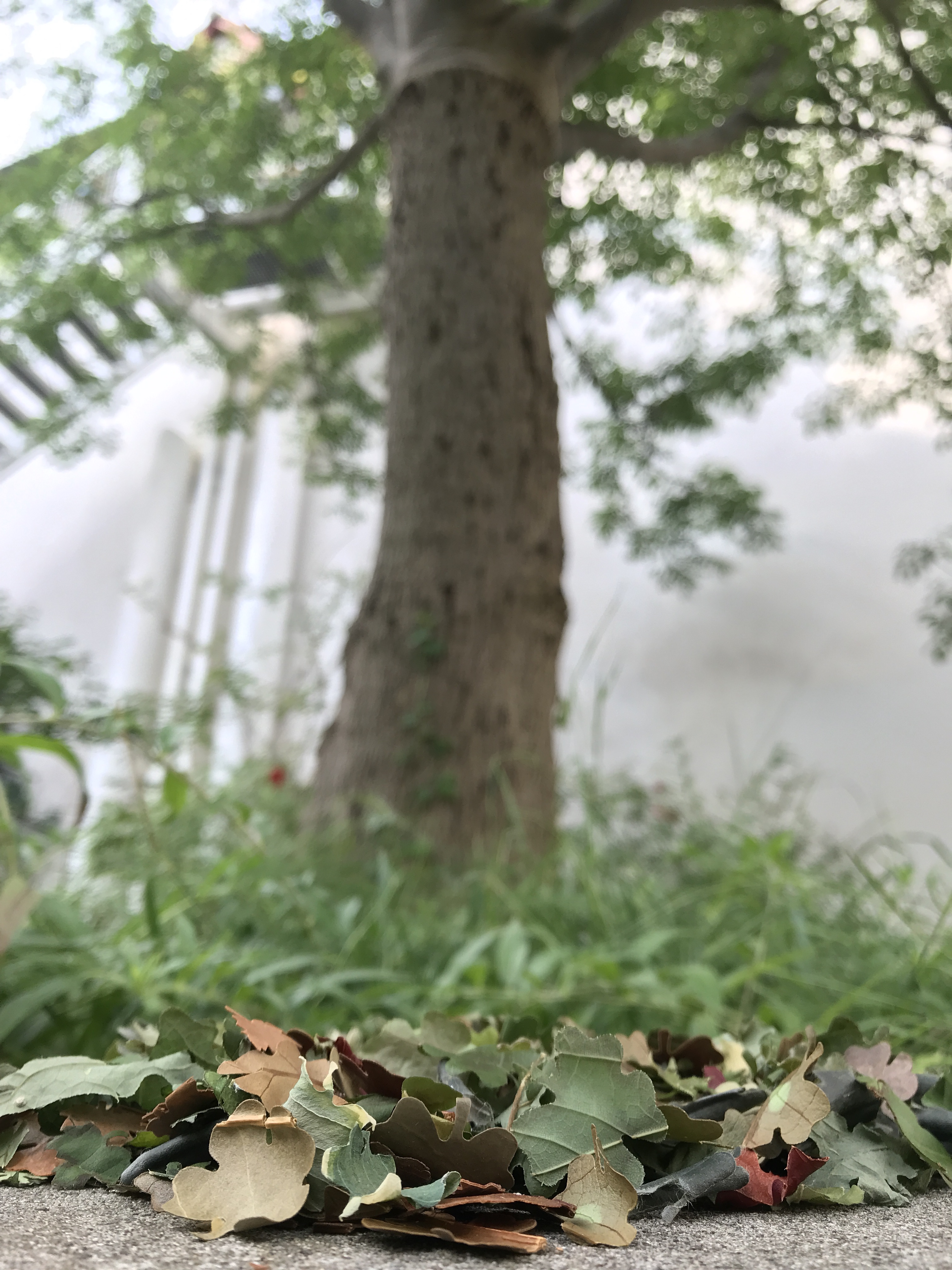
A big tree makes good shade and the shade gathers people 樹大可成蔭 樹蔭好聚人
2021, Leaves collected and punched by Hongkongers in Europe, size variable
The concept stems from a recent community project of the artist in a district called Happy Valley in Hong Kong with a local art space C&G Apartment in April and May 2021. Happy Valley is the home of the horse-racing course and is often associated with the phrase ‘horse will race, dance will continue’ referring to the fifty years of autonomy the city was promised after the handover of 1997.
Observing another phenomenal migration wave in Hong Kong, Ching prepares the mini leaves as souvenirs for the people who are leaving. The leaves in our palms act as pixels of camouflage landscapes, urging us to reflect on the notion of change: climate/temperature, nature/environment, synchronising indoor/private lives. This contemplation is believed to have a therapeutic effect.
Ching has extended the project to different districts in Hong Kong and was invited by the curator to expand the project and its spirit with the Hong Kong communities in Switzerland, where the curator lives, and to Germany, where this exhibition take place in both Murrhardt and Berlin.
In this installation, the leaves are collected by Hongkongers in Switzerland and Germany from their everyday living environments and punched to create a new diasporic landscape and memory to reflect on the notion of transition. Camouflage is a combination of a plural colour spectrum and corresponds to different terrains. In the artist’s eyes, with many leaving Hong Kong, the concept of ‘we’ will have to transcend physical space and territory from now on and rebuild many small reasons to come ‘together’.
The Chinese saying ‘A big tree makes good shade and the shade gathers people’ echoes the pixel nature highlighted in Ching’s video work, and also the solidarity of people. The audience can take some leaves home as souvenirs and Hongkongers are welcome to add some leaves to the gathering of new landscapes and stories.
BIO
Luke Ching (b.1972, Hong Kong) received his MA in Fine Arts in The Chinese University of Hong Kong. Broadly acknowledged as one of the most active conceptual artists in Hong Kong, Ching works on the ground and walks into different communities twisting the roles of an artist and an observer in our society, as demonstrated in his ‘Undercover Worker’ series that spread in Hong Kong and beyond. Ching creates artworks that transcend conventional forms, restriction and control. He breeds a discursive system with a good mix of humour, responding and interrogating the cultural and political collisions occurred in Hong Kong.
Recent exhibitions include solo exhibitions “Glitch in the Matrix” (Para Site Art Space, Hong Kong, 2020), “Liquefied Sunshine” (Blindspot Gallery, Hong Kong, 2019), “For Now We See Through a Window” (Gallery EXIT, Hong Kong, 2016), “Folk Art Series” (Blackburn Museum & Art Gallery, Blackburn, UK, 2008); group exhibitions “Dismantling the Scaffold” (Tai Kwun Contermporary, Hong Kong, 2018), “Imagine Border” (Gwangju Biennale, Gwangju, Korea, 2018); residency programmes at Fukuoka Asian Art Museum (Japan, 2006) and P.S.1 Contemporary Arts Center (New York, 2000). Ching was awarded the Artist of the Year (Visual Art) Award by the Hong Kong Arts Development Council in 2016. Ching currently lives and works in Hong Kong.
LO Lai Lai Natalie 勞麗麗
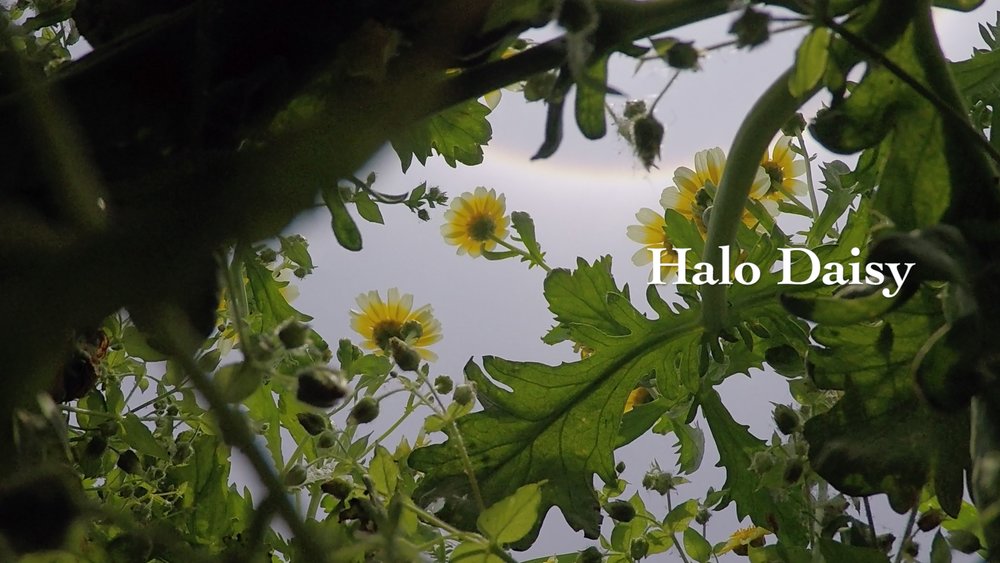
Weather Girl, Halo Daisy 天氣女郎
2016, Video, 6 mins 32 secs
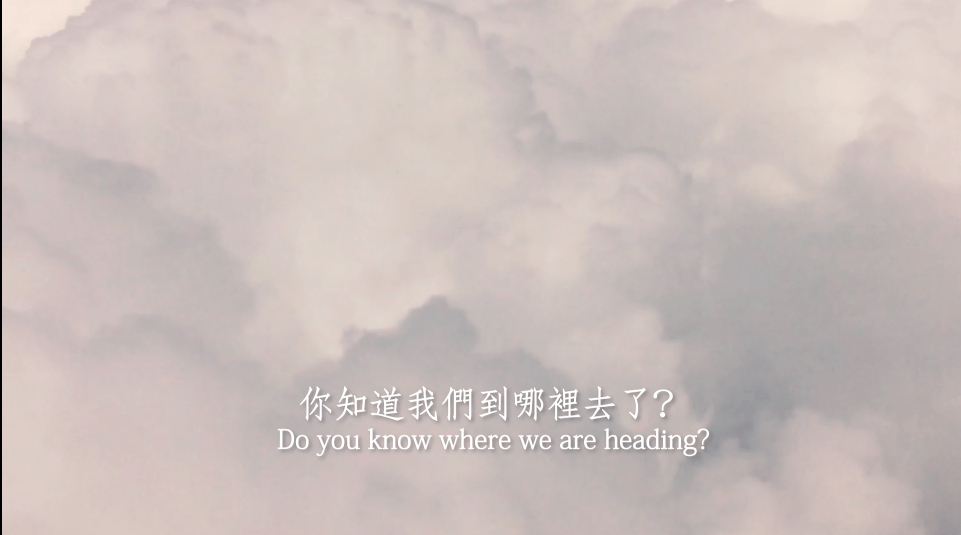
Cold Fire 冷火
2019-2020, Video, 10 mins 18 secs
What is a halo cloud? In the format of weather reporting narrated by a cheerful female voice, Lo Lai Lai Nathalie shares her records of emotions in Weather Girl, Halo Daisy (2016). It is her repertoire to deploy a lighthearted approach with superficially soothing trivial imagery to engage the viewer on heavy content, often of social and personal issues in the real world. The volume and temperature of sweat, tears and emotions can be detected in this video. Farming is a therapeutic process for the artist and she often sets a camera randomly in the field while she is at work. By chance the natural phenomenon of the halo cloud was captured. The clouds look calm on the surface, yet with the fierce undercurrents, the phenomenon is formed with a ring of rainbow in the everchanging conditions. This video is part of Lo’s ‘Slow-so TV’ series. The music chosen is Siko Horepse Sirtaki, a Greek folksong selected as the weather forecast music on TV in Taiwan in the 1990s.
Unlike ‘Weather Girl’, the level of expression and emotion on the surface has heightened in Lo’s ‘Cold Fire’ (2019-2020). One might be fascinated by the mysterious beings rippling through the sensual body of smoke, clouds or water. In the next scene, the viewer is on a plane with safety cards and a window view of clouds, eavesdropping on conversations about a mixture of fear of plane crashes and life and death:
‘Cut off her relationship with the iron bird.’
‘Floating on the ocean with her unknown companies, towards an unknown future.’
‘Do you know where we are heading?’
‘No, I don’t. I never do.’
‘It seemed calm looking from thousands of feet from above.’
‘Only because we could not see the thriving, indomitable bacteria.’
The music selected for this work cultivates another layer of narrative. The melancholic theme in ‘Vallée d’Obermann’ by Franz Liszt (1811-1886) was composed during his journey across the Swiss Alps in 1835 along literary sources including Étienne Pivert de Senancour’s novel ‘Obermann’ with notions of solitary despair, overcoming hopelessness, human existence, immensity of suffering in this world. Would it be a coincidence or the artist’s déjà vu or the reflection on her many memories accumulated during the creation of this work?
Through the fermentation process to the revelation of the mysterious being – i.e. the fire used for fermentation – the cold fire at the same time represents the energy and solidarity of people.
BIO
Lo Lai Lai Natalie (b. 1983, Hong Kong) received her Bachelor of Art (Fine Arts) and Master of Fine Arts from The Chinese University of Hong Kong. Lo is a former travel journalist and is interested in the development and the construction of nature. She is a learner at the collective organic farm Sangwoodgoon (Hong Kong) where she explores the lifestyle of she calls “Half-Farming, Half-X”, a practice that seeks alternatives and autonomy as an artist and a Hongkonger. Lo finds her interests on food, farming, fermentation, slow-driving, surveillance, and meditation. Her artworks are mostly moving images, photography, mixed media and installation.
Lo solo exhibitions include “Give no words but mum” (Tomorrow Maybe, Hong Kong, 2020), “Down into the Abyss” (bonacon Gallery, Guangzhou, China, 2018), “Slow-So TV – Ann Eilathan’s Gaze” (Floating Projects, Hong Kong, 2016) and “Souvenir and Gift” (The Observation Society, Guangzhou, 2014). She received the WMA Commission Grant on Opportunity in Hong Kong and her works had been exhibited in San Francisco, Paris, Dresden, Johannesburg, Yogyakarta, Beijing and Shanghai and in the collection of the Sigg Collection and Asian Art Museum of San Francisco.
YIM Sui Fong 嚴瑞芳
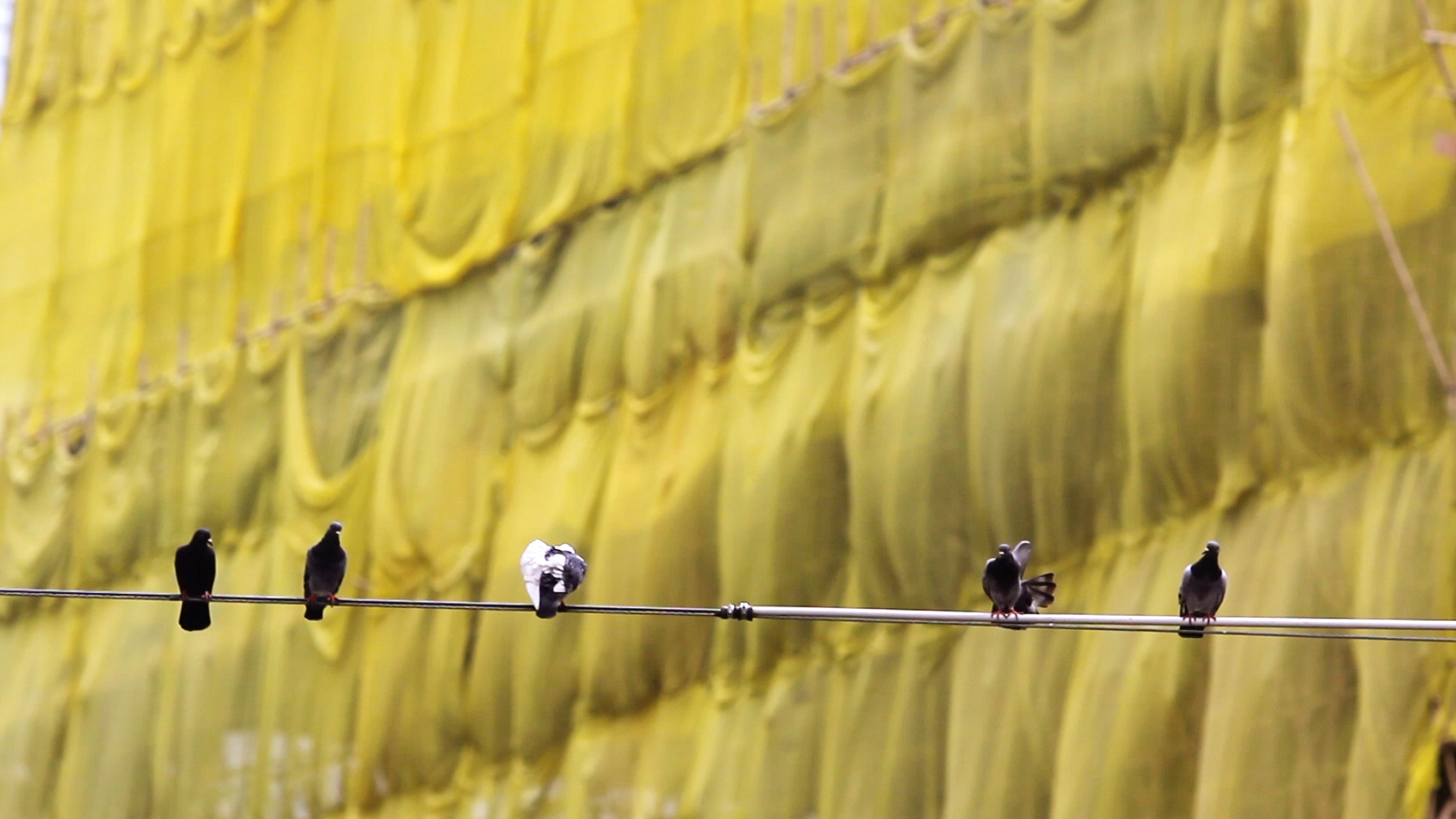
Black Bird Island 黑鳥島
2017, Video, 6 mins 32 secs
The video Black Bird Island (2017) by Yim Sui Fong stems from her interview with a former Hong Kong pigeon seller Mr. Leung Kam Hung and the history of the official 1997 handover celebration that the Regional Council of Hong Kong organised where thousands of pigeons transported from the Chinese border were released at the Sha Tin Sports Ground. Due to severe rainstorms, most birds could not return to their homeland and were stranded.
The artist creates a fiction with friction comprising multiple layers of social commentary based on two observations: a field study of the sky-coastline shaped by pigeon colonies since the handover in 1997 where the birds were being observed; and an encounter with a young girl being bullied where the bird becomes an observer. The jump-cuts bridge the story of the pigeons in Hong Kong, and through their lens into the psychological state of the society at the time.
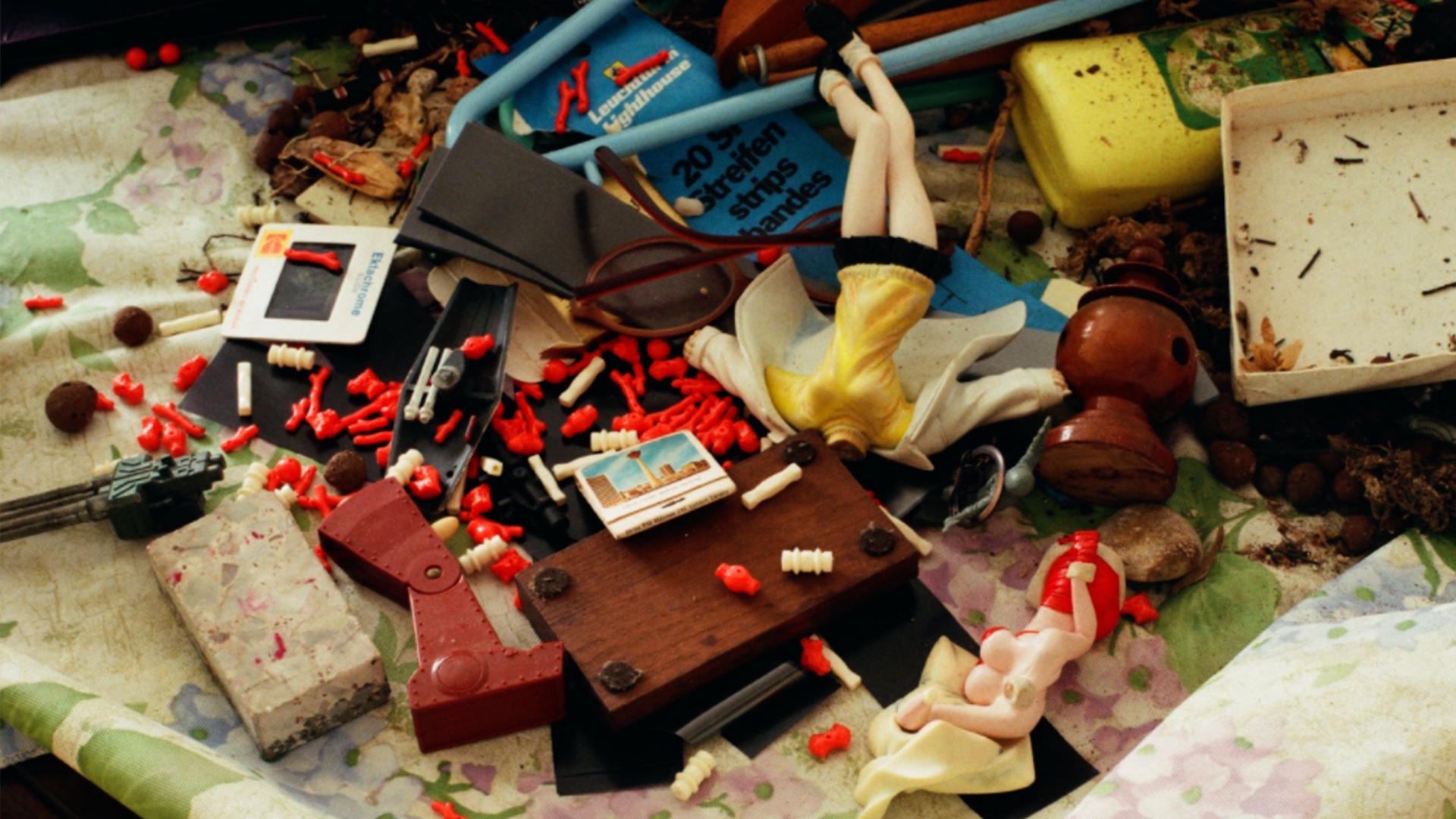
The Unlocked Space 大門沒有上鎖
2017, photo & video installation, size variable
Housing has always been a major issue in Hong Kong. From illegal settlements improvised by hand with scraps and salvaged materials in the 1950s, to the implementation of cooperative buildings, Hongkongers were once hopeful that they could build their own homes. However, with ever-surging property prices, housing now brings only staggering pain to the majority of the population.
Yim’s father used to live in the squatter area near ‘Wong Ka Chong’ which was formerly a government-owned factory during the British colonial period. Tracing the old address, the artist found a six-storey civil servants’ cooperative building which has been left abandoned after having been sold in 2016 to a developer from China which has grand redevelopment plans for high-rise luxury apartments on the site.
Walking into the obsolete building, Yim found a large unlocked empty apartment. Her curiosity was provoked by the frozen time that is encapsulated in the objects of the daily life and memory of the then-realities inside: newspaper from 31st May 1989 and handwritten calendar; documents of the Cooperative Building Society and pieces of personal particulars; five to eight-digit telephone numbers; postcards from overseas and a collection of VHS; statues of deities from different cultures and copies of pornography. Their existences have been forgotten along with their functions. Metaphorically speaking, do they belong to a piece of history in oblivion which can be manipulated, reinterpreted and disappeared? The artist questions if all these represent the nature of transition. Are the objects left only with the emotions floating and the temperature remaining amidst the dust cloud at the scene she has captured through her camera lens?
BIO
Yim Sui Fong (b. 1983, Huidong, China) is a multi-disciplinary Hong Kong artist, a Master of Fine Arts (MFA) graduate from The Chinese University of Hong Kong. She is the co-founder of the artist-run organisation Rooftop Institute and a member of the Hong Kong artists’ collective, L sub. Yim Sui Fong’s artistic practice focuses on the actiontable aspects behind image creation, pursuing questions such as how we re-read history and how we could connect communities through artistic action. She often uses methods of visual documentation to intervene in real-life texts; through anecdotes, she reveals relationships between people, objects and geography which are overlooked by history. By combining interviews and reference documents, she creates semi-fictional and semi-realistic audiovisual narratives through installations. In the process, revealing realities through illusions. Her works are inspired by three recurrent themes: performativity, images and the study of sounds. She explores various forms of uneasiness people face in society and examines the relationship between individuality and collectivity. Through artistic action and workshops, she provides a platform to connect collective consciousness, while refracting the perplexity and imagination of social phenomena.
She was recently awarded the WMA Masters Award 2017/18 and finalist of Hong Kong Human Rights Arts Prize 2017. Her book project ‘The man who attends to the times’, commissioned by Oi!, Hong Kong (2018). Recent exhibitions include ‘Artists’ Film International’, Whitechapel Gallery (2019), ‘Hic Sunt Leons’, Surplus Space, Wuhan, China (2019), ‘The Wall 2019’, Cattle Depot, Hong Kong (2019), ‘Talkover/Handover 2.0’, 1 a Space, Hong Kong (2017), ‘Mountain Sites: Views of Laoshan’, Sifang Art Museum, Nanjing, China (2016), L sub is the selected artist group to present in Hong Kong House at EchigoTsumari in Japan in 2020.
HOMELAND in TRANSIT Through the Clouds Video Talk
Hong Kong Artists: Lo Lai Lai Natalie & Yim Sui Fong
Curator: Angelika Li
[fve] http://player.vimeo.com/video/573091698 [/fve]
Curator Bio
Angelika Li (b. 1975, Hong Kong) is committed to engaging with the essence of local culture, heritage and valued stories, and driving a continuous dialogue between local and international communities. She is the founder and curator of the on-going curatorial project HOMELAND in TRANSIT (Basel 2019, 2020; Berlin 2020, 2021; Murrhardt, 2021; Zollikon, Ishigaki, 2022) and the co-founder of PF25 cultural projects, a non-profit research initiative and cultural exchange programme focusing on the everyday life and ecologies of Hong Kong and Basel – and extending to other regions of Switzerland. Her most recent exhibition is “Dorothee Sauter: Geology, Cooking Heart, Curious and other stories” (Basel, 2021).
Before moving to Switzerland in 2017, Li was the founding director of MILL6 Foundation in Hong Kong, bringing it to ICOM museum status and achieving the Award for Arts Promotion by Hong Kong Arts Development Council in 2016. Her previous curated projects in Hong Kong include: The Mills Heritage Project “Chim↑Pom – It’s the Wall World” (2015); the public art by VHILS at The Mills (2015); “Tracing some places. Leung Chi Wo” (2015); “Social Fabric. New works by Kwan Cheung Chi and Mariana Hahn” in collaboration with David Elliott (2016); “Old Master Q: What The @#$% Is Going On? Original Works by Alphonso Wong” (2014); “Beyond the Paper Screen – An Exhibition of Japanese Erotic Prints from The Uragami Collection” (2013); “NEW INK: an exhibition of ink art by post 1970 artists from The Yiqingzhai Collection” (2013); and as the director of MILL6, she co-organised with Zhejiang Art Museum “Textile Thinking – The International Symposium” at Hangzhou Triennial of Fiber Art 2016.
HOMELAND in TRANSIT Logo Design Concept


 Back to Homepage
Back to Homepage

